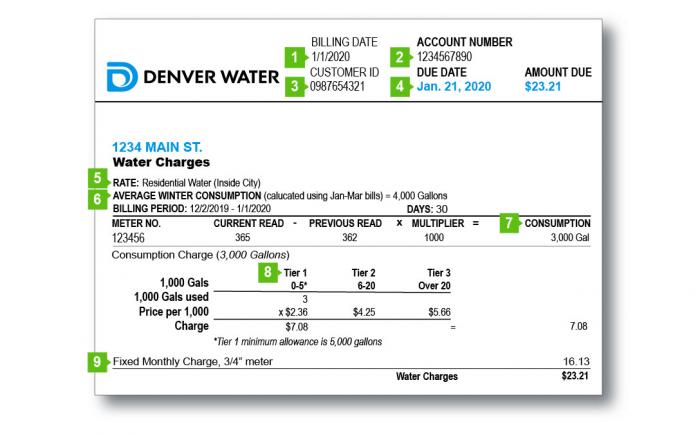Let’s take a closer look at your monthly bill from Denver Water, which contains a lot of information.
- Billing date: This is the date the water meter is read.
- Account number: The account number for the property, needed to set up a self-service account and make a payment.
- Customer ID: A unique customer identification number, needed for owners, tenants and property managers to set up a self-service account and make a payment.
- Due date: The bill is due 21 days after it is generated and considered delinquent six days after the due date.
- Rate: Customers are charged based on how the water is used. There are three rate categories: residential, nonresidential (commercial and multiunit properties) and irrigation. The rate is also determined by service type, such as “Inside City” for Denver customers, or “Total Service” or “Read and Bill” for suburban customers who receive a bill from Denver Water and live in distributor districts that have signed a contract with Denver Water.
- Average winter consumption: This is the calculation of the monthly consumption and number of days in the billing period on bills dated January, February and March.
- Consumption: The amount of water used during the billing period as measured by the meter. Denver Water bills in thousand-gallon increments and rounds down to the nearest thousand gallons. For example, if the month’s consumption is 2,999 gallons, the monthly bill will charge for 2,000 gallons.
- Tiers: The three tiers are based on the amount of water used and the idea that the more you use, the more you pay. The first tier covers essential indoor water used for bathing, cooking and flushing toilets and is charged at the lowest rate.
- Fixed monthly charge: This charge helps pay the cost to collect, store, treat and deliver water to 1.5 million people.

